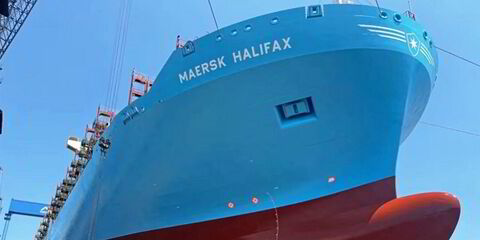UK shipbroking group Clarksons is asking shipowners to spare a thought for cargo owners experiencing hugely volatile freight markets and increased costs.
Analyst Trevor Crowe said Clarksons Research has regularly updated shipping companies on changes in vessel rates, but looking through the eyes of shippers provides an equally important perspective.
“The 2020s has been a volatile period for shipping with some huge swings in freight as major global events have impacted markets,” he added.
The Covid pandemic and the Ukraine war have obviously been at the forefront of these.
Amplified transportation costs have been felt by both industrial and manufacturing cargo, Crowe said.
The average cost of freight this decade has clearly exceeded that in the 2010s, he added.
Cargo owners are paying 18% more for iron ore, 27% more for grain and 32% for crude shipments, based on aframax rates.
The figure for LPG is 34% and for container ships, up to 3.5 times extra for box freight.
Crowe also said that underlying cost increases and inflation have had an impact.
The switch to low sulphur fuel alone has seen bunker costs for most ships rise by a fifth since the last decade.
“Shipping markets remain (multi) cyclical, but the 2020s have so far left a material mark on transportation costs. Freight has had to adjust to enable shipping to maintain its essential service whilst bearing the costs of disruption,” Crowe added.
Keeping an eye on costs
“Freight rates are now down from peak levels in many cases, but how shipping manages growing complexity - decarbonisation, fleet renewal, geopolitics - should be high up on cargo owners’ watchlists,” he argued.
Looking at the main sectors, Clarksons Research figures show dry bulk freight costs generally peaked in 2021 as a demand rebound from the negative impacts of the onset of Covid met with notable logistical disruption.
Brazil to China capesize iron ore costs hit $47 per tonne in October that year, 2.6 times the 2010s average.
Oil freight costs have seen even bigger swings.
At the start of the pandemic, driven by demand for floating storage, freight costs for crude on VLCCs from the Middle East to Asia spiked to $8 per barrel, five times that seen in the previous 10 years.
Cross-Med aframax costs then reached more than four times those of the 2010s following Russia’s invasion of Ukraine.
A swift bounce-back in consumer spending following the initial impacts of Covid, combined with severe port congestion and supply chain disruption, drove freight rates to all-time highs for container cargo shippers from 2021 into the first half of 2022, the company said.
Spot rates from Asia to Europe hit $7,797 per teu, eight times the 2010s average.




